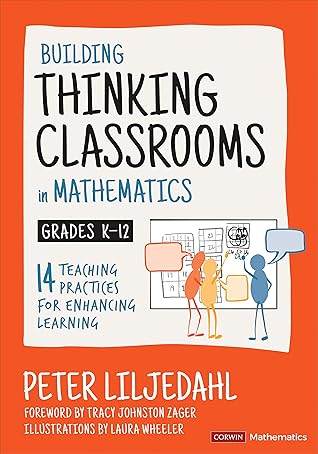More on this book
Community
Kindle Notes & Highlights
Read between
December 10, 2020 - October 10, 2021
that problem solving is what we do when we don’t know what to do.
It is not the implementation of a taught algorithm. And it is not the smooth execution of a formula. Problem solving is a messy, non-linear, and idiosyncratic
it. Good problem-solving tasks require students to get stuck and then to think, to experiment, to try and to fail, and to apply their knowledge in novel ways in order to get unstuck.
The problem is that mimicking is only an effective strategy when the number of routines to memorize is small. As the student moves up in grades, the number of routines per topic increases, until this becomes an unmanageable and ineffective strategy.
It turns out that in super organized classrooms, students don’t feel safe to get messy in these ways.
The message they are receiving is that learning needs to be orderly, structured, and precise.
On the other hand, thinking should not be completely unstructured. It needs elements of representation and organization for patterns to begin to emerge. Therefore, overly chaotic spaces are not the answer either.
We only needed to defront a room in order to also destraighten and desymmetrize it.
What we found was that answering a question with a question (and only a question) was only effective when it was immediately followed by the teacher walking away from the students, with no other statements or suggestions being made.
As students began to realize that their questions weren’t going to be answered, they stopped asking them
Instead of walking away when a proximity or stop-thinking question is being asked, we would instead look at the student and smile as they asked their question. Then we would walk away.
Over time, the students began to see the smile and walk away as a sign that the teacher had confidence in their ability to resolve the question on their own.
talking to students about the practice after two weeks of not answering proximity and stop-thinking questions, coupled with a lot of smiling and walking away, was met with very positive reactions—“So that’s what is going on!” This was not perceived as asking permission, but rather an explanation for something that had already become an implicit part of their classroom norms.
However, writing on a vertical surface was far less effective than what turned out to be best—giving the task verbally.
Almost every teacher I have interviewed says the same thing—the students who need to do their homework don’t, and the ones who do their homework are the ones who don’t really need to do it. It is a broken construct that long ago lost the good intention under which it was conceived.
However, if the worked solutions are provided the next day, or a few days after, the students now have a chance to compare their thinking to that of the worked solution as well as to get help with any questions they were unable to resolve on their own. Many teachers I worked with gave out worked solutions by posting them on a class website or portal.
Begin by communicating with them about why you give “homework” and how these reasons are embodied in the name check-your-understanding questions. Explain that the questions that may or may not be coming home are to be treated as a safe place for their child to make mistakes and that the purpose is for them to learn from these mistakes. If they insist on having more questions for practice, you can tell them that ample practice questions can be found on the internet, but that they will not be part of your teaching practice.
Lack of autonomy is synonymous with lack of choice. And lack of choice reduces the need for students to think.
Having said that, it is always best if groups who are in the helping role are thoughtful about how they give out ideas so as to maximize the opportunity for the learning group to think. You may wish to discuss this with your class from time to time—but not until after you have begun to mobilize knowledge.


